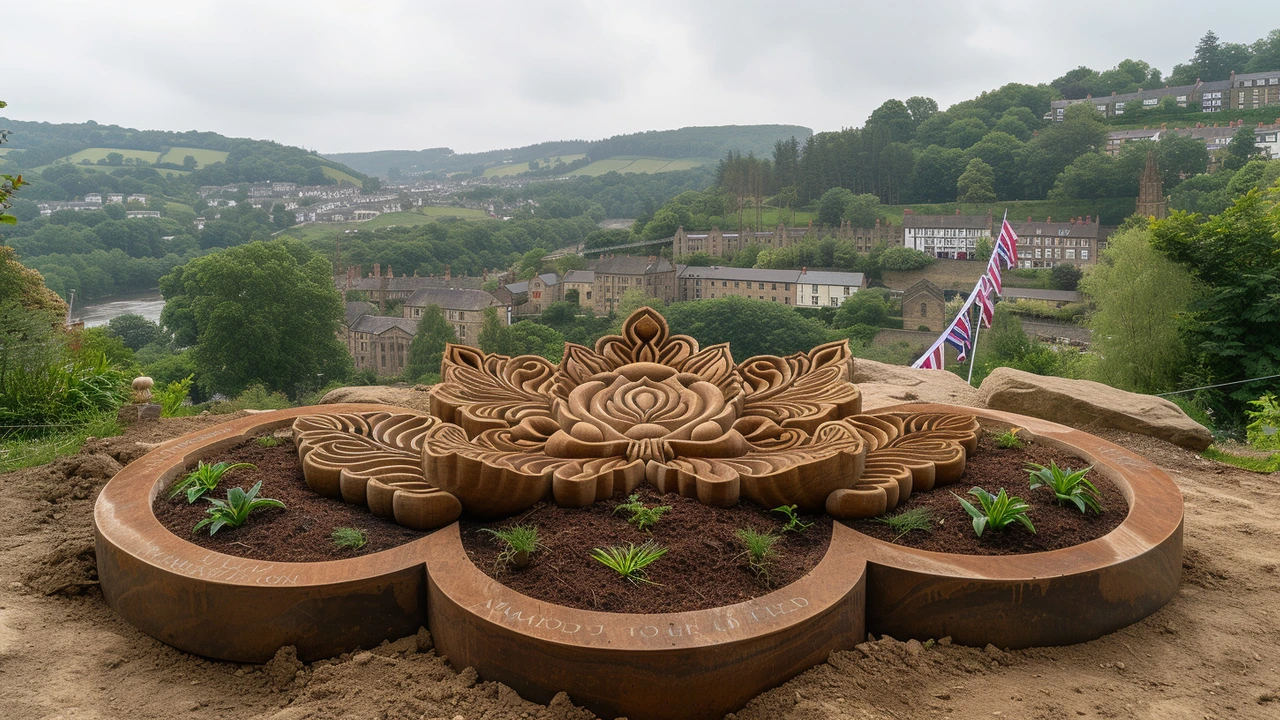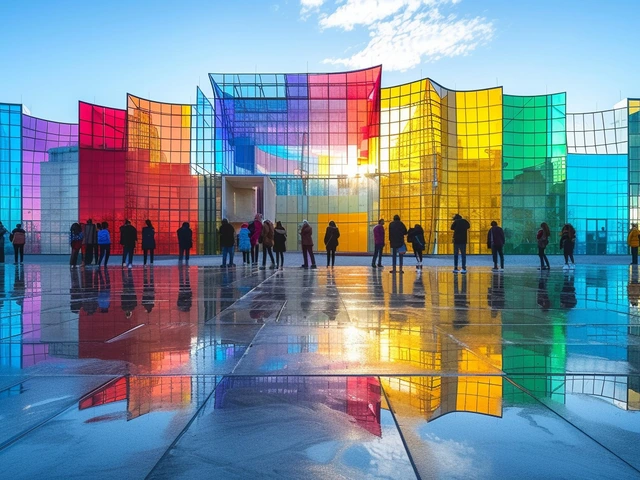Emergence and Evolution of Land Art
The late 1960s bore witness to a seismic shift in the art world with the emergence of land art. As a bloke living in Sydney, surrounded by both lush landscapes and urban sprawl, I find the concept of land art deeply resonant. It's a world away from conventional galleries and museums, instead taking the viewer on a journey to remote locations where the art itself becomes part of the landscape. Originally born out of the environmental movement and disillusionment with the commercialization of art, land art redefined what art could be and where it could exist. It was a rebellion against the commodification of art, emphasizing impermanence, outdoor elements, and the importance of the site in which the artwork was created.
Artists like Robert Smithson, with his iconic 'Spiral Jetty' in the Great Salt Lake of Utah, and Michael Heizer, known for 'Double Negative,' a colossal earthwork in Nevada, became pioneers of this movement. These artworks, intended to integrate with and respond to their environment, challenged viewers to consider the art in relation to nature and the landscape it inhabited. Land art pushed boundaries by requiring people to journey, physically and metaphorically, to experience these works, making them accessible only to those who made the effort to engage directly with the natural world.
Challenges to Traditional Artistic Norms
Conventional art, confined to the physical boundaries of canvas and galleries, was turned on its head by the land art movement. The norm of producing art to be viewed in an indoor, controlled environment was challenged by the scale, scope, and location of these earthworks. Unlike paintings or sculptures that can be owned, bought, or sold, land art often exists beyond the market's reach, emphasizing the experience over possession. This shift in perspective forced a reevaluation of art's role and purpose, proposing an art that was inseparable from its environment and temporal by nature.
In Australia, where the landscape itself teems with textures, colors, and stories, the principles of land art hold a special significance. Here, the relationship between the land and its people, especially indigenous cultures, adds layers of meaning to the practice of creating art in and with the earth. This connection underpins the notion that land art can serve as a bridge between contemporary art practices and ancient traditions, honoring the land's history and spirit in the process of creation.
Land Art and Environmental Activism
The intersection of land art and environmental activism is profound. By utilizing the natural landscape as a medium, artists not only highlight the beauty and fragility of the earth but also draw attention to environmental issues threatening it. Land art can be seen as a form of eco-activism, where the creation process respects and preserves the environment, encouraging viewers to reflect on their relationship with nature. In some cases, the temporary nature of land art—subject to erosion, weathering, and the passage of time—serves as a stark reminder of ecological vulnerabilities and the transience of human interventions.
As someone living in Sydney, witnessing the effects of climate change firsthand, from bushfires to coral bleaching in the Great Barrier Reef, the relevance of land art in today's conversation on environmental issues cannot be overstated. Projects like 'Saltwater Forest' by Australian artist Bonita Ely, which melds ecological concerns with artistic expression, underscore the potential of land art to foster a deeper understanding and appreciation of our environment, urging collective action towards its preservation.
Interactive and Community Engagement Through Land Art
One of the most unique aspects of land art is its capacity to engage communities and encourage interactive experiences. Unlike traditional gallery-bound art, land art often invites viewers to traverse through, around, and even on top of the artwork, engaging with it in a physical, immersive manner. This form of engagement transforms passive observers into active participants, creating a conversation between the viewer, the art, and the landscape.
In my own explorations, I've witnessed how land art projects, especially those integrated within urban settings, can revitalize spaces and bring communities together. Through initiatives like temporary land art installations in parks or along coastlines, artists and community members collaborate to reconnect with their environment, fostering a sense of stewardship and collective identity. This hands-on approach demystifies art, making it accessible and relevant to people from all walks of life, reinforcing the idea that art is not just to be viewed but experienced and lived.
The Future of Land Art in a Changing World
As we grapple with the realities of climate change and environmental degradation, the message and medium of land art remain more pertinent than ever. This movement, which began as an avant-garde challenge to conventional art norms, has evolved into a vital commentary on our relationship with the planet. The potential for land art to inspire change, both in the art world and in environmental consciousness, is immense. By emphasizing sustainability, community, and a profound connection with the natural world, land art offers a blueprint for a future where art and ecology converge.
Reflecting on the trajectory of land art from its insurgent beginnings to its current incarnation as a tool for ecological advocacy and community engagement, it's clear that this movement transcends the mere act of creating art. It's a call to action, a reminder to tread lightly on the earth, and a testament to the power of creativity to instigate real change. As we look forward, the principles of land art can guide us in reimagining our collective future, one where art and environment coexist in harmony, reminding us of our responsibility to protect and cherish our planet.




